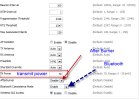- Joined
- Dec 27, 2005
- Messages
- 8,538
- Reaction score
- 741
I think I posted a thread last time with wrong model number. Want to give it another go this time as im sick of using the VM Super Hub. So have set it to modem only mode and got everything up and running but want to get DD-WRT on the router.
Went to Router Database | www.dd-wrt.com entered model number. It recommends V24 preSP2 [Beta] Build 14896 but underneath that theres 8 different downloads so im confused...
Can someone help me with a few directions on what I need to download and how to do it please
FW currently on stock linksys Firmware Version: 1.0.05
Went to Router Database | www.dd-wrt.com entered model number. It recommends V24 preSP2 [Beta] Build 14896 but underneath that theres 8 different downloads so im confused...
Can someone help me with a few directions on what I need to download and how to do it please
FW currently on stock linksys Firmware Version: 1.0.05
Last edited:

